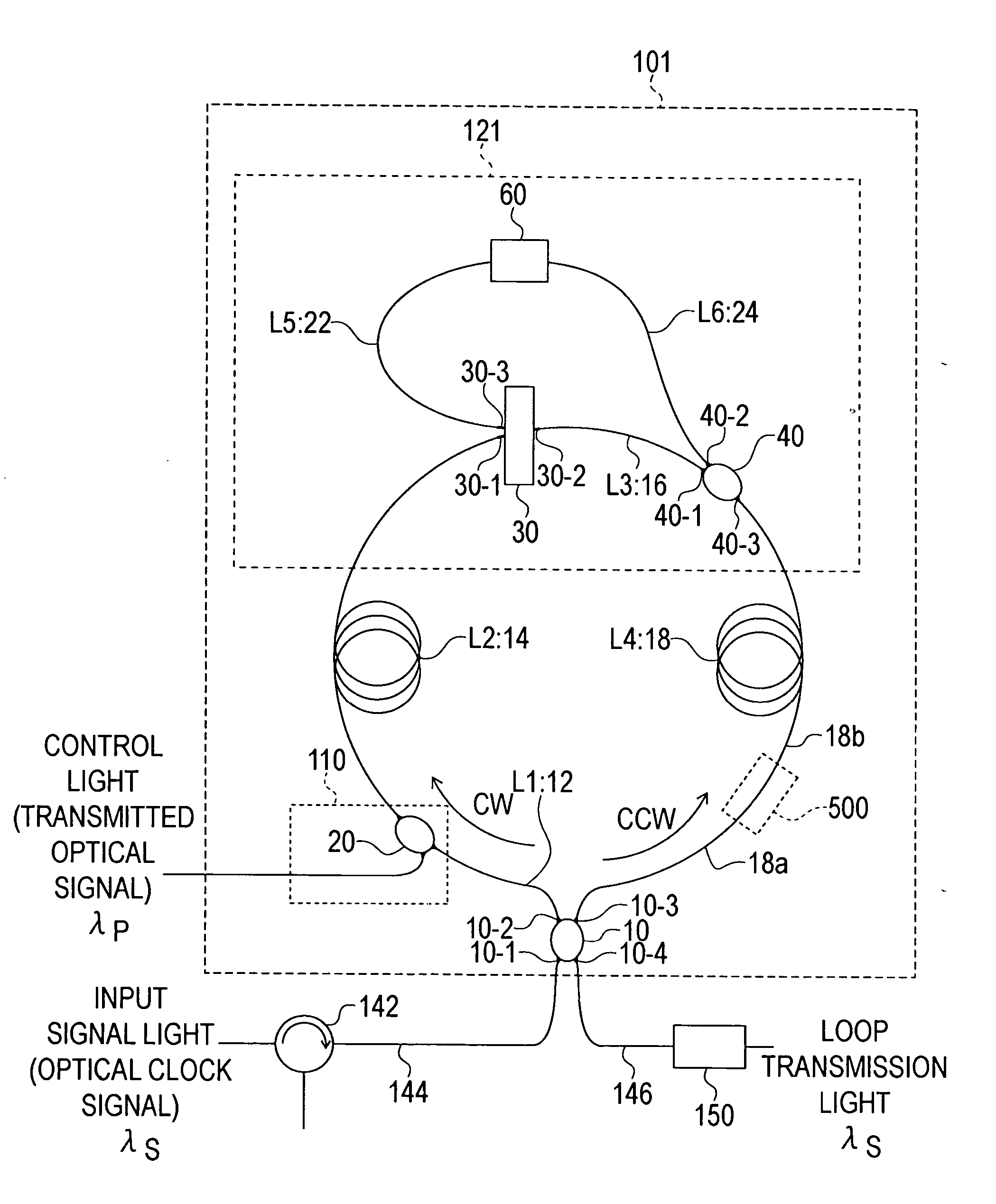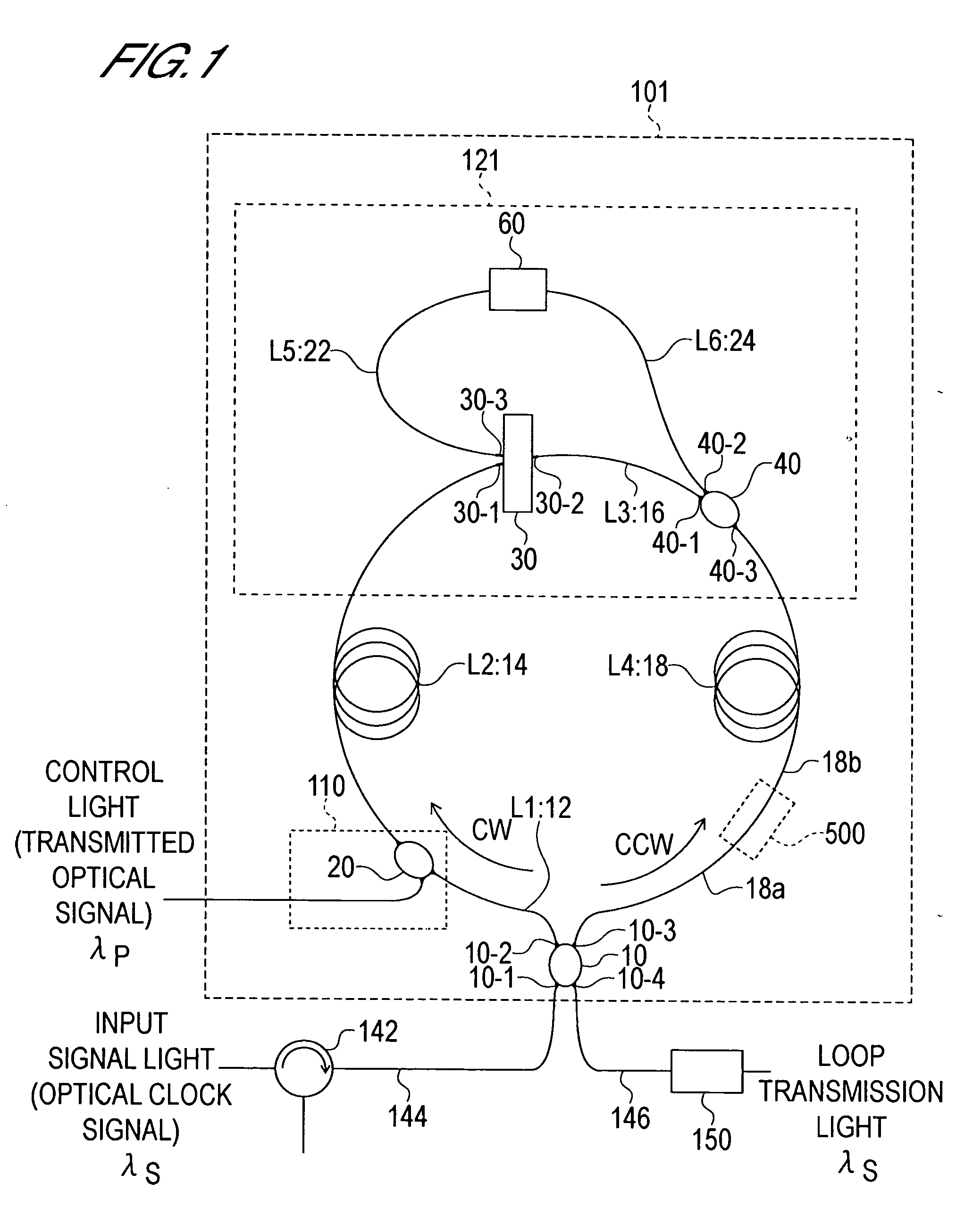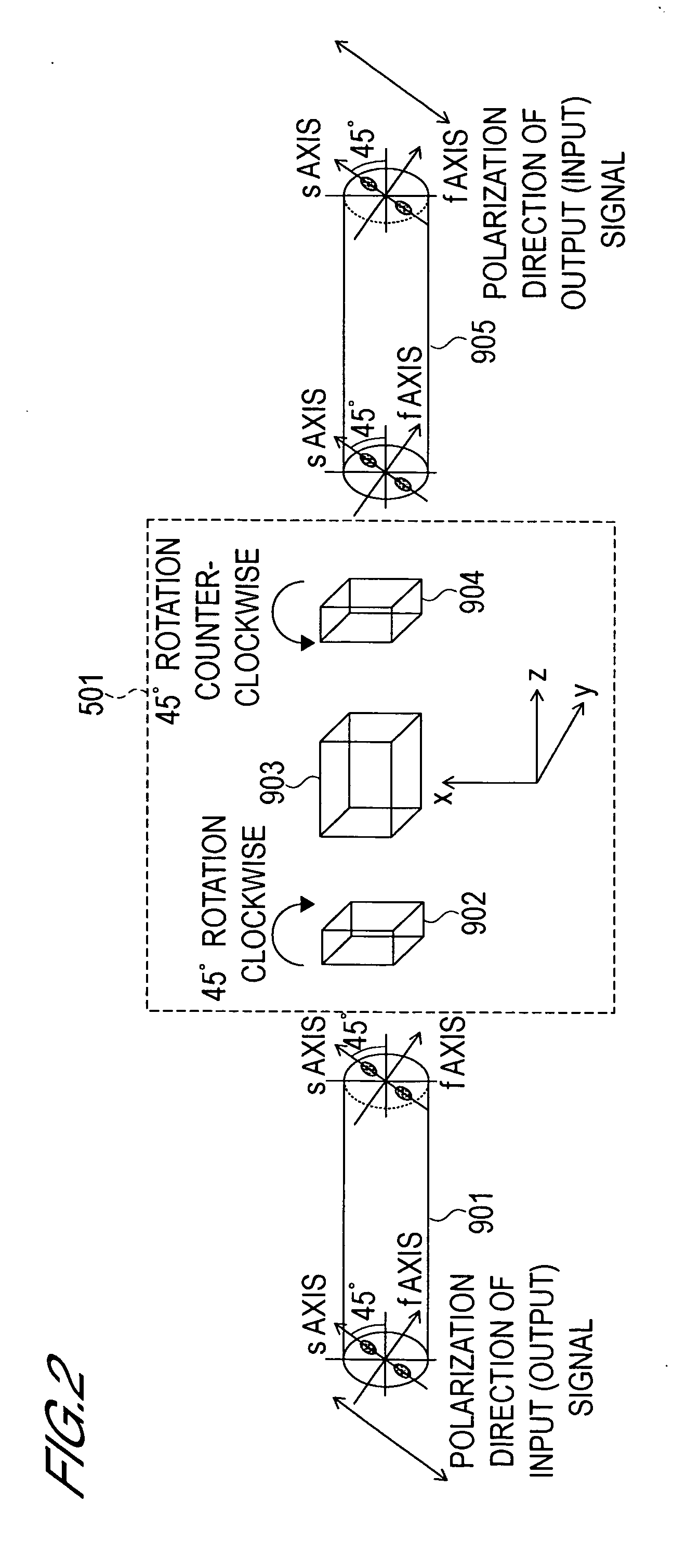Optical Switch
a technology of optical switch and optical pulse, which is applied in the field of optical switch, can solve the problems of reducing the signal to noise ratio (s/n) of the optical pulse signal, increasing the propagation loss, and affecting the stability of the switching operation, so as to achieve stable switching operation independent
- Summary
- Abstract
- Description
- Claims
- Application Information
AI Technical Summary
Benefits of technology
Problems solved by technology
Method used
Image
Examples
first embodiment
[0065] (Structure)
[0066] The structure of a first optical switch serving as a first embodiment of the present invention will now be described with reference to FIG. 1. The first optical switch is constituted by a loop-form optical waveguide loop circuit 101 formed from an optical nonlinear medium, and control light input means 20 of phase control means 110 for inputting a control light into the optical waveguide loop circuit 101, and also comprises a wavelength demultiplexing / multiplexing circuit 121 and a phase bias circuit 500.
[0067] The optical waveguide loop circuit 101 is constituted by an optical path (also referred to as “path L1” hereafter) formed from a first polarization-maintaining single-mode fiber 12 extending from an optical demultiplexer / multiplexer 10 to the control light input means 20, an optical path (also referred to as “path L2” hereafter) formed from a second polarization-maintaining single-mode fiber 14 extending from the control light input means 20 to the ...
second embodiment
[0221] (Structure)
[0222] The structure of a second optical switch serving as a second embodiment of the present invention will now be described with reference to FIG. 8. The second optical switch is constituted by a loop-form optical waveguide loop circuit 102 formed from an optical nonlinear medium, and the control light input means 20 of the phase control means 110 for inputting a control light into the optical waveguide loop circuit 102, and also comprises a wavelength demultiplexing / multiplexing circuit 122 and the phase bias circuit 500.
[0223] The constitution of the second optical switch differs from the constitution of the first optical switch described above in that an optical delay device 70 is inserted at a point on the path L6.
[0224] The optical demultiplexer / multiplexer 10 comprises the first port 10-1 for inputting a signal light, the second port 10-2 connected to one end of a first polarization-maintaining single-mode fiber 13, the third port 10-3 connected to the o...
third embodiment
[0258] (Structure)
[0259] The structure of a third optical switch serving as a third embodiment of the present invention will now be described with reference to FIG. 10. The third optical switch is constituted by a loop-form optical waveguide loop circuit 103 formed from an optical nonlinear medium, and the control light input means 20 of the phase control means 110 for inputting a control light into the optical waveguide loop circuit 103, and also comprises a wavelength demultiplexing / multiplexing circuit 123 and the phase bias circuit 500.
[0260] In the third optical switch, the optical waveguide loop circuit 103 is constituted by an optical path (also referred to as “path L1” hereafter) formed from the first polarization-maintaining single-mode fiber 13 extending from the optical demultiplexer / multiplexer 10 to the control light input means 20, an optical path (also referred to as “path L2” hereafter) formed from a second polarization-maintaining single-mode fiber 51 extending fr...
PUM
| Property | Measurement | Unit |
|---|---|---|
| wavelength bandwidth | aaaaa | aaaaa |
| temperature | aaaaa | aaaaa |
| wavelength | aaaaa | aaaaa |
Abstract
Description
Claims
Application Information
 Login to View More
Login to View More - R&D
- Intellectual Property
- Life Sciences
- Materials
- Tech Scout
- Unparalleled Data Quality
- Higher Quality Content
- 60% Fewer Hallucinations
Browse by: Latest US Patents, China's latest patents, Technical Efficacy Thesaurus, Application Domain, Technology Topic, Popular Technical Reports.
© 2025 PatSnap. All rights reserved.Legal|Privacy policy|Modern Slavery Act Transparency Statement|Sitemap|About US| Contact US: help@patsnap.com



